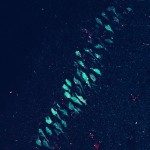Link to Pubmed [PMID] – 23145210
Am J Transl Res 2012;4(4):422-31
Extinction bursts are characterized by a temporary increase in responding when drug access is withheld from rats trained to self-administer drugs of abuse. Thus far, one study has examined extinction bursts for nicotine self-administration using a 23-h access paradigm [1]. Here we examined extinction bursts using previously published and unpublished data in which rats were trained to self-administer nicotine (0.03mg/kg/infusion) or food pellets (as a comparator) in 1-h sessions under an FR5 schedule of reinforcement followed by 1-h extinction sessions. Analysis of response rates during nicotine self-administration (NSA) was indicative of a loading phase, as response rates were significantly higher at the beginning of the session, which was not observed for food self-administration. At the start of extinction for both food and nicotine, although sessional response rates did not increase, there was an increase in response rate during the first 5-min of the first extinction session relative to self-administration. This transient extinction burst following nicotine was observed in a minority of subjects and correlated with the number of nicotine infusions obtained during self-administration. This transient extinction burst following food was observed in all subjects. Nicotine and food produce more transient extinction bursts compared to other drugs of abuse and only for a minority of animals in the case of nicotine. This study supports the presence of a loading phase in rats trained to self-administer nicotine in 1-r daily sessions and the presence of a transient extinction burst.

